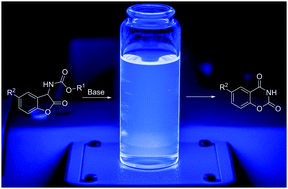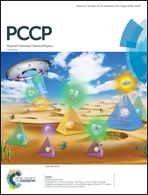Mechanistic investigations of the 2-coumaranone chemiluminescence†
Abstract
2-Coumaranones are evolving as a new, efficient, versatile, and synthetically accessible platform for the next generation chemiluminescent probes. Despite the favorable quantum yields, the exact mechanism of their chemiluminescence remains elusive. Here, we analyze the details of the mechanism of the 2-coumaranone chemiluminescence using a combination of experimental and computational methods. By using EPR spectroscopy we show that superoxide radical anions are involved in the reactions, in support of the hypothesis that the mechanism includes a single electron transfer step. The decomposition of the high-energy intermediate, 1,2-dioxetanone, is described in the ground state and in the first three excited singlet states, and indicates that there is at least one conical intersection, which is crucial for generation of excited-state molecules. A peroxy anion that is generated was found to be able to undergo a side reaction that leads to the same (isolated) product as in the light-generating reaction. These results demonstrate the applicability of 2-coumaranones as a model system for several bioluminescence reactions and may lead to the design of new 2-coumaranone derivatives with superior emission characteristics for bioanalytical applications.



 Please wait while we load your content...
Please wait while we load your content...